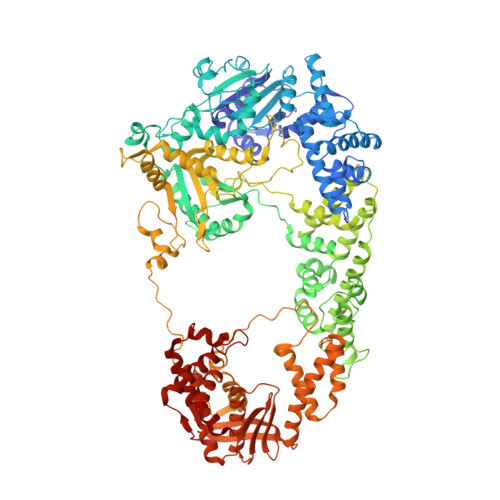Mechanism for nuclease regulation in RecBCD.
Wilkinson, M., Chaban, Y., Wigley, D.B.(2016) Elife 5
- PubMed: 27644322
- DOI: https://doi.org/10.7554/eLife.18227
- Primary Citation of Related Structures:
5LD2 - PubMed Abstract:
In bacterial cells, processing of double-stranded DNA breaks for repair by homologous recombination is catalysed by AddAB, AdnAB or RecBCD-type helicase-nucleases. These enzyme complexes are highly processive, duplex unwinding and degrading machines that require tight regulation. Here, we report the structure of E.coli RecBCD, determined by cryoEM at 3.8 Å resolution, with a DNA substrate that reveals how the nuclease activity of the complex is activated once unwinding progresses. Extension of the 5'-tail of the unwound duplex induces a large conformational change in the RecD subunit, that is transferred through the RecC subunit to activate the nuclease domain of the RecB subunit. The process involves a SH3 domain that binds to a region of the RecB subunit in a binding mode that is distinct from others observed previously in SH3 domains and, to our knowledge, this is the first example of peptide-binding of an SH3 domain in a bacterial system.
- Section of Structural Biology, Department of Medicine, Imperial College London, London, United Kingdom.
Organizational Affiliation:





















